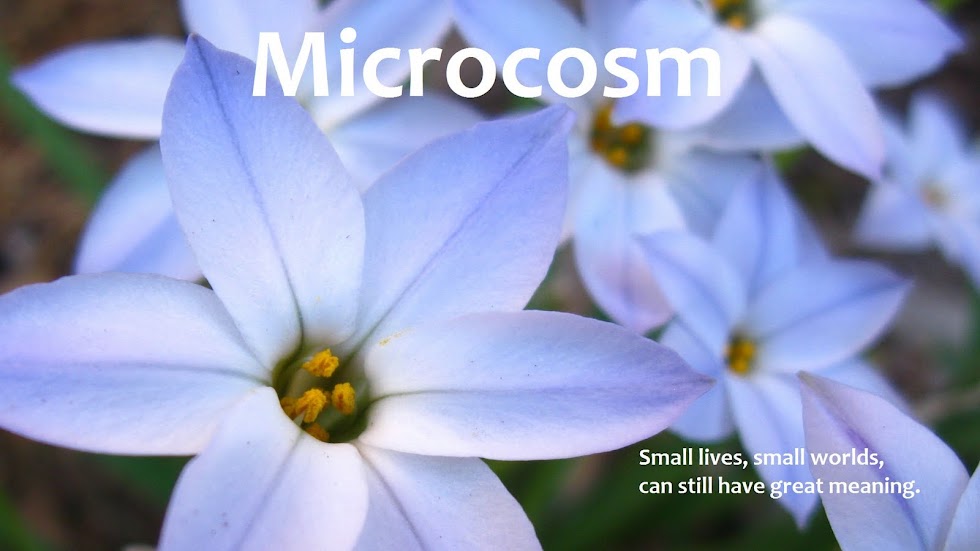orStacy's Top 10 Tips for Living with Chronic IllnessorJoy Doesn't Just Happen On Its OwnI'm sorry to depart from my normal format for today, but I've just read one too many posts that did nothing but whine and complain on various CFS and Fibromyalgia (FM) Facebook pages, and I've had it up to here. Admittedly, I am one of the "lucky" ones and can function at about 75% of my former capacity; but even when I was at 25% I didn't see the point of shooting myself in the foot over and over again, if at all. (Harping on your symptoms doesn't make you less aware of them!) As a counterweight, I would like to offer some positive tips for living with CFS, FM, and many other chronic illnesses. They are not suggestions for medications or supplements or life-style changes or therapies--the web has plenty of other sources for that. Rather, they are some of my strategies for accepting illness as
part of my life while not allowing it to rule my life. (And I apologize if they sound a little irritated at the moment.)
1. Prioritize. Illness does offer us gifts, if we just have the good sense to recognize them. One of the most powerful gifts is also one of the nastiest afflictions--the incapacity to do everything (or almost anything) we used to do. The bad side of that is clear and does not need to be belabored here. The good side of it is that we really have to figure out what matters to us at the very deepest levels. What are your core values? What principles do you hold most dear? Not what do you enjoy
doing the most, but what do you
care about the most? Healthy people can engage in all sorts of activities whether they express their values or not. People with chronic illnesses do not have that luxury. We cannot expend energy on things that don't matter. So figure out what you value--what your mission is, what your vision is. Find the activities that you can do that further your values, and don't waste precious energy on the things that don't. You may be surprised to discover that you can live out your values no matter what your current abilities.
2. Learn the difference between complaining and acknowledging--facing facts honestly and objectively. Don't complain. It doesn't help, and it lands you endlessly in a victim's role. Acknowledge, yes. When your parents ask how you're doing, chances are they actually want to know. So tell them--two or three sentences MAX ought to do it, and your voice really does not need to whine in the telling--and then move on. Mourn your losses, yes. They're real, and they hurt, and they matter. Move on. With the same amount of energy that it takes to complain, you could also tell your sister that you love her, or ask about a dear friend's day. If you give complaining priority, what does that say about what you value? Considered another way, what do you want people to say about you at your funeral, many years hence? That illness embittered you? That you used to be so wonderful before you came down with CFS? Or that you were an inspiration, because despite illness you knew how to give love and joy and life to those around you?
3. Practice gratitude. If you are reading this online, you already have blessings of awe-inspiring magnitude--an education (twelve years of which probably cost you nothing), electricity, running water, a temperature controlled environment, a refrigerator, foods from all over the planet, internet access to a world of ideas. We take all those things for granted, but just imagine trying to live with chronic illness without them, even for a day. And that list of wonders doesn't even include the
most wonderful things: supportive, loving family and friends. Focusing on your blessings--and you have them, if you will just look--will help shift your awareness from the victim's endless litany of "poor me, poor me, poor me" back to the things that you really do care about, and make you alert to other good things as they happen. Gratitude is the first step toward joy.
4. Live your enjoyments to the hilt. Many of the things you enjoy now may not be your first choice, and they may be smaller than they used to be--an hour on the patio rather than a day in the mountains--but it's silly not to enjoy them fully because of that. Learn to savor every pleasure, no matter how small.
5. Do something for someone else. Anything. We are meant to be givers, and life can seem pointless when we feel that we have nothing to offer. Believe that you matter, despite how much of your life you spend lying in bed, or in soul-numbing isolation, and give something of what you have inside you away. It can be as simple as a smile for someone who needs it. Giving helps. Immensely.
6. Melt down
occasionally with a trusted friend. We all lose our perspective now and then, and we all lose our way forward. Be truthful about your fears and frustrations and griefs. Be honest. But don't get bogged down in complaints, and let your friend help you find your footing again. In those circumstances, he or she is probably happy to be supportive. (Thank you, R.S.!)
7. If at all possible, put your bed and sofa where you can look out at trees or some other greenery. (Studies have shown that people in hospitals recover from surgery faster, use less pain medication, and are better patients when they have trees to look at.) In my current home, I don't really have that option at the moment, and it makes a surprisingly huge difference. We deal with enough pain and unpleasantness. Looking outside at something beautiful and alive can substitute pleasure for pain, even if it's only a little bit. It also reminds us that life does continue, and that we are a part of it.
8. Also if at all possible, spend time outside. As one of my friends likes to say, "Sitting inside is just sitting. Sitting outside is an activity." If you have a porch or patio or balcony, use it on every nice day that you can. You'll be part of life in ways that you never can be inside a house. You can observe the changing seasons in intimate detail, follow the lives of bumblebees or hummingbirds or toads, watch flowers go from bud to bloom to seed. Because sitting outside is an activity, no matter how gentle, someone with CFS may not always be able to manage it. But if you're able to read a book or watch TV, take your cup of tea out onto the patio for a while instead, and soak up some of the good kind of reality for a while. Adirondack chairs are wonderful things.
9. Spend time relaxing. For those of us who lie on sofas a lot, that may seem like a stupid thing to say, but I find that I can be lying down and still not be relaxed. When I was healthy and worked and played hard, it was easy to relax, because the difference between the two states was so clear. But reading (for example) as a nice, calm way to end a busy day is a much different thing than reading as a way to mark time until the day is over and you can officially go to bed. The one is relaxing, the other--not so much. It may only be light activity, but it's not unwinding. Make a point of doing whatever helps you unwind every day. Your body and spirit are stressed by illness. Give them a breather.
10. Be gentle with your friends and acquaintances. (Possibly even with your medical doctors.) They will fail you, believe me, if they haven't already. At some point, someone you trusted will say, "Well, we all feel tired sometimes. I'm tired right now." (And then you'll watch them walk up five flights of stairs without stopping, and still be functional at the top.) They'll desert you when you need them, they'll be ready for you to be over this because they are, they'll say all the wrong things. You know what? I've failed my friends, too. There are times when I have just refused to be who they needed me to be, for no good reason. There are times when I've said thoughtless things to an acquaintance because I didn't have the imagination or experience to understand his or her situation. We are all human. If a "friend" is out and out cruel, of course, abandon that friendship, and the sooner the better. If someone takes energy you can't afford to give, then reset the boundaries. But if they're doing their best under the circumstances and just don't get it... Be gentle. Be willing to forgive and forget. The world of the chronically ill is small enough--don't make it smaller by excluding people you care about just because they have human limitations.
Which leads me to this bonus tip, which sums up most of the others: Always remember--even your illness is not all about you.
















